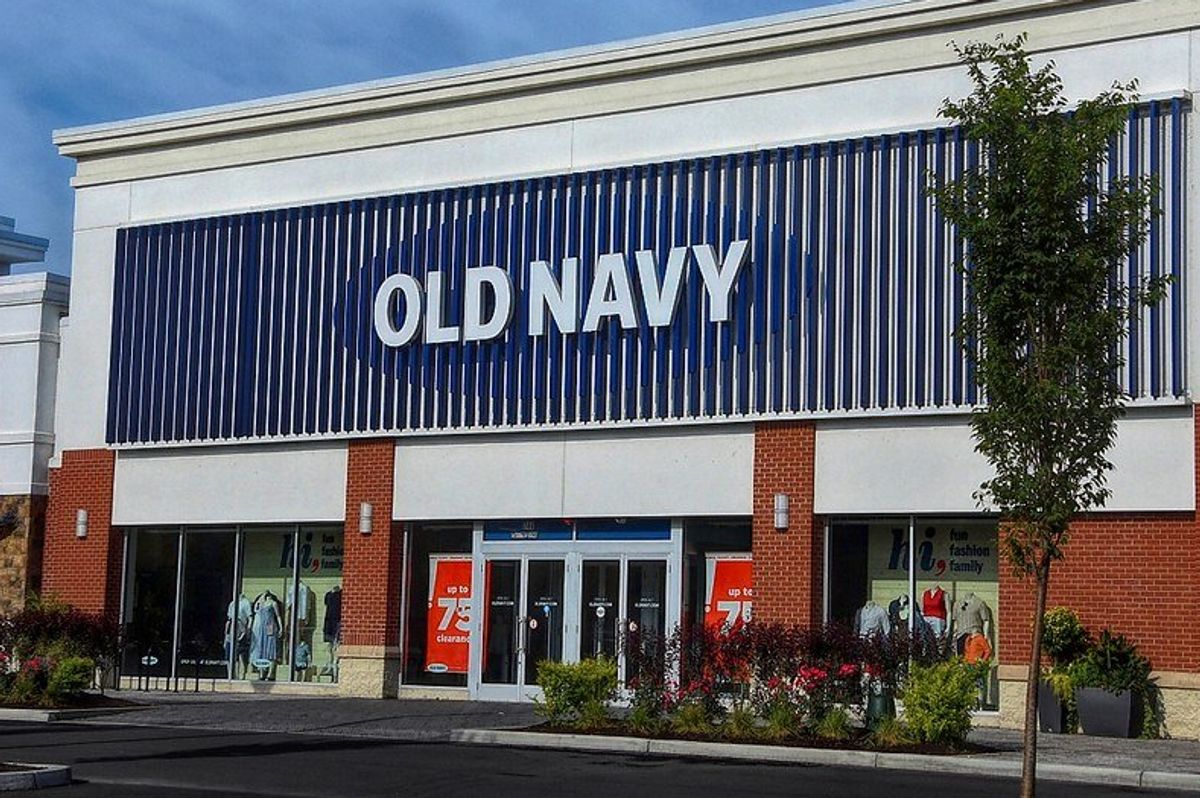Old Navy customers share the not-so-subtle fashion trends that show we're headed for a recession
People are noticing some Hunger Games vibes.

An Old Navy Retail store.
Recent shake-ups in U.S. trade policy have caused many to fear that the United States economy may fall into a recession this year after remaining surprisingly resilient after the COVID-19 pandemic. Recently, J.P. Morgan research raised the probability of a global recession to 40%. On March 19, Federal Reserve Chair Jerome Powell said the chance of an upcoming recession is rising, but the probability is still not high.
Is the economy headed for a recession?
A recession occurs when the economy slows down for two consecutive quarters. The last time the U.S. economy hit a recession was a brief period from February to April 2020 because of the COVID-19 pandemic. Even though the U.S. economy has yet to cross the line into recession, two savvy shoppers at Old Navy believe that the signs are all there when it comes to new clothing on the shelves.
TikToker Zoe (@zoezoezoezand) made her case in a viral video with over 790,000 views. “We're at Old Navy and we're pretty sure that they've got some recession predictors out here, so I'm gonna show you what we're talking about,” she said before pointing out that a frock was giving her Hunger Games vibes.
@zoezoezoezand Old Navy wants us back in the factories y’all #oldnavy #recessioncore #recessionindicator #recession
“We're starting fresh with our District 12 frock, it's made out of a nice uh rough material that's what you want, it's a nice oatmeal color just like you want it,” Zoe jokes. For those of you who aren’t familiar with the Hunger Games series of books and films, District 12, located in Appalachia, was the smallest and poorest of the 13 districts.
Zoe added that another vintage-looking pair of pants was a sign that people will have to quit their cushy service jobs and return to working with their hands soon. “I know what you're thinking, those little pants aren't that bad, and they're not. I actually think they're kinda cute,” she said. “But what do they make you think of? Right, a sailor or perhaps Rosie the Riveter. They're trying to get us prepared to get back out to work.”

What is the Hemline Index?
While shopping at your local Old Navy may not give you the best economic indicators, there has been a correlation between women’s attire and the economy in American history. The “Hemline Index,” a theory that suggests hemlines get higher when the economy is good and lower when it turns sour.
InStyle notes that hemlines rose in the 1920s before the stock market crash that helped lead to the Great Depression in 1929. They rose again during the wartime boom of the 1940s and dropped again during the recession of 1949. A slow and steadily growing economy led to the creation of the mini shirt in the late ‘60s, which once again became longer after the 1987 crash.
How "short" is your economy? 😉
There's a theory called the "Hemline Index" which suggests that skirt lengths are related to economic conditions. Shorter skirts are said to indicate a booming economy, while longer skirts are associated with economic downturns. pic.twitter.com/pJ3udtDk5i
— Tree of Knowledge (@ToK_ScienceTree) February 5, 2025
Hopefully, the U.S. economy doesn’t go into a recession so that Americans and our friends worldwide don’t have to suffer through the belt-tightening that comes from a downturn. But, interestingly, history shows how today’s styles might indicate tomorrow’s economic signals. Because, as Zoe’s video shows, economies aren’t just random numbers on stock tickers and forecasts but actual indicators of how people think, feel, and behave.
- A new material made from seaweed will transform the entire textile industry ›
- 11 old-timey frugal living habits younger generations need to bring back ASAP ›
- 9 reasons you shouldn't throw away clothes, and 4 things you can do instead. ›
- Here’s a paycheck for a McDonald’s worker. And here's my jaw dropping to the floor. ›





 Baby boomer grandparents.via
Baby boomer grandparents.via  A stressed mom with her head in her hands.via
A stressed mom with her head in her hands.via  A stressed mom doing laundry.via
A stressed mom doing laundry.via  season 7 episode 6 GIF
season 7 episode 6 GIF diane guerrero latina GIF by Identity
diane guerrero latina GIF by Identity Dexters Laboratory Type GIF
Dexters Laboratory Type GIF Traditional strawberry farming takes up a lot of land.
Traditional strawberry farming takes up a lot of land. Girl Illustration GIF by Valérie Boivin
Girl Illustration GIF by Valérie Boivin Jennifer Lopez Applause GIF by NBC World Of Dance
Jennifer Lopez Applause GIF by NBC World Of Dance